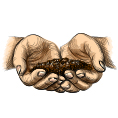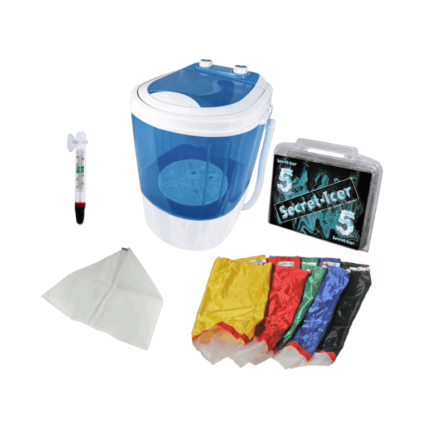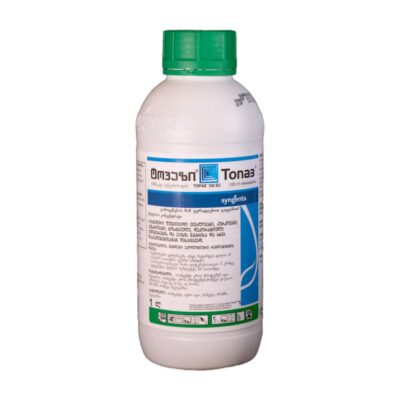Topaz
Topaz fungicide provides dependable protection against grape diseases such as powdery mildew, and it is trusted by growers across the country. When applied using the proper methods, Topaz fungicide will control powdery mildew with excellent efficacy for season-long protection. In addition to top-quality disease control, a Topaz program will provide continued vine health and vigor. After understanding the product, you will have confidence and peace of mind that you are following a season-long program of proven disease control for your grape vines.
As an all-round agricultural fungicide, Topaz provides premium protection for potatoes, vegetables, and grapes. From the risk of foliar diseases to tuber blight, Topaz is your ultimate solution. With a unique formulation, it has less odor and less potential for volatile losses. Formulated as water-soluble granules, Topaz can also be tank mixed with most commonly used pesticides. Its composition and mode of action are: Composition: 12% w/w Flutriafol, 72% w/w others. Mode of action: a broad-spectrum fungicide used on a wide range of crops to prevent and control various diseases like gray mold in grapevines, early blight, and late blight in potatoes. The active ingredient in Topaz has a systemic mode of action, with a unique mobility pattern in the plant to provide protection to both sides of the leaves and also to provide suppression of tuber blight. For optimal control, apply Topaz in a protective spray program where the first application should be applied preventatively and not wait until disease is seen. The normal range between applications is 10 to 14 days. Some diseases like tuber blight need to be treated with tighter spray intervals.
Topaz Fungicide – Application Methods and Techniques
Topaz Fungicide-Miticide is an extremely active product and will provide exceptional control of powdery mildew on cucumber, melons, and other cucurbits, as well as powdery mildew on apple, peach, and nectarine. However, the use rate is at a fraction of other greenhouse fungicides. There are two basic ways to apply fungicides and miticides: you can apply by penetration or deposition. To penetrate the foliage means to force your spray mixture up, down, and sideways through the foliage canopy to the extent that it makes contact with fruit and exposed leaf tissue. To deposit a fungicide product on the foliage means to cover the surface with your spray mixture droplets of the right size and in the right concentration to be effective. The ideal spray distribution pattern gives a uniform deposit or penetration of the spray mixture evenly over the surface most likely to be infested with the pathogen.
Foliar Spray
Foliar spray is the main application method for the treatment of foliar diseases. This method requires a relatively small amount of water to dissolve the fungicide, which can effectively cover the upper and lower surfaces of the leaves. When the density of conifers is low, the leaves can be sprayed evenly. However, care must be taken to control the spray volume to maintain an appropriate flow rate. The spray should be even when used in dense conifer stands to prevent large amounts of spillovers. In addition, the airflow is reduced, so that the spray droplets do not drift away. It is recommended to increase the number of spray units during strong winds. When using hard surface forest, the amount of the recommended conifer oil dilution should not exceed 0.125% volume/volume.
Aerial spray application is recommended when the volume of 10 g/A dry Topaz is used in a water-based carrier. After drying, the reactivity of Topaz with soluble foreign fertilizers varies with the routine recommended with other application equipment. Foliar application of Topaz at 2.5 pints per acre rate sprayed on compatible agricultural chemicals such as fungicides, miticides, insecticides, liquid fertilizers, or other additives is compatible with BMP, CFFCA, or CRDF at the inch stage. Nonionic surfactants and adjuvants can also be used to mix Topaz with other agricultural chemicals.
Seed Treatment
Topaz Fungicide may be used for seed treatment on all cereal grains. When using Topaz Fungicide as an integral part of disease control in conjunction with other good management practices, a rate of 1 part of Topaz Fungicide to 2 parts of water (1:2) should be used. PRECAUTION: To avoid dust hazards, use a slurry formulation where mechanization is involved, particularly when treating large quantities of seed. COLOUR: Mix 1 part of Topaz Fungicide to 8–10 parts of water (1:8–10). Use a clean measuring device that will provide accurate measurement of small quantities of Topaz Fungicide. PREPARATION & MIXING: Pour the calculated amount of Topaz Fungicide into the required quantity of water while mixing. Use the slurry immediately. Do not treat seed with Topaz Fungicide that has been mixed with water in advance of application.
APPLICATION PROCEDURES: Immerse the seed in the slurry for 1 minute to ensure full coverage, using a method and rate of application that will ensure cost-effective seed treatment while providing satisfactory coverage. ENSURE THE SEED IS THOROUGHLY COVERED. In continuous auger treaters, treat the seed with Topaz Fungicide using the lowest effective volume of slurry and the lowest effective feed rate. After treatment, make all possible efforts to have treated seed drain and dry as rapidly as possible to ensure minimal segregation and satisfactory flow on handling equipment. After treatment, make all possible efforts to have the treated seed drain and dry as rapidly as possible to ensure minimal segregation and satisfactory flow on handling equipment. Do not add insecticides or other seed protection products to Topaz Fungicide while it is being applied to the seed.
Soil Drench
Use soil drench applications for the control of Pythium root rot in most bedding plants, ornamental plants, landscape trees and shrubs, and other ornamental crops grown in commercial and residential greenhouses, nurseries, and landscapes. You may also use soil drench applications in combination with other approved cultural management practices. Apply the product in a sufficient volume of water to thoroughly penetrate the soil and reach the roots of the plants. Place the plant holders in the irrigation system to increase the effective runoff and minimize standing sprays in reservoirs as well as to increase soil leaching. To ensure thorough coverage and soil penetration, adjust the volume of water to be applied according to the size and growth of the plants to be treated, the type of soil in the treated area, and other prescribed management practices used in the treated area. Keep the treated area moist after application until full penetration into the soil is obtained.












Reviews
There are no reviews yet.